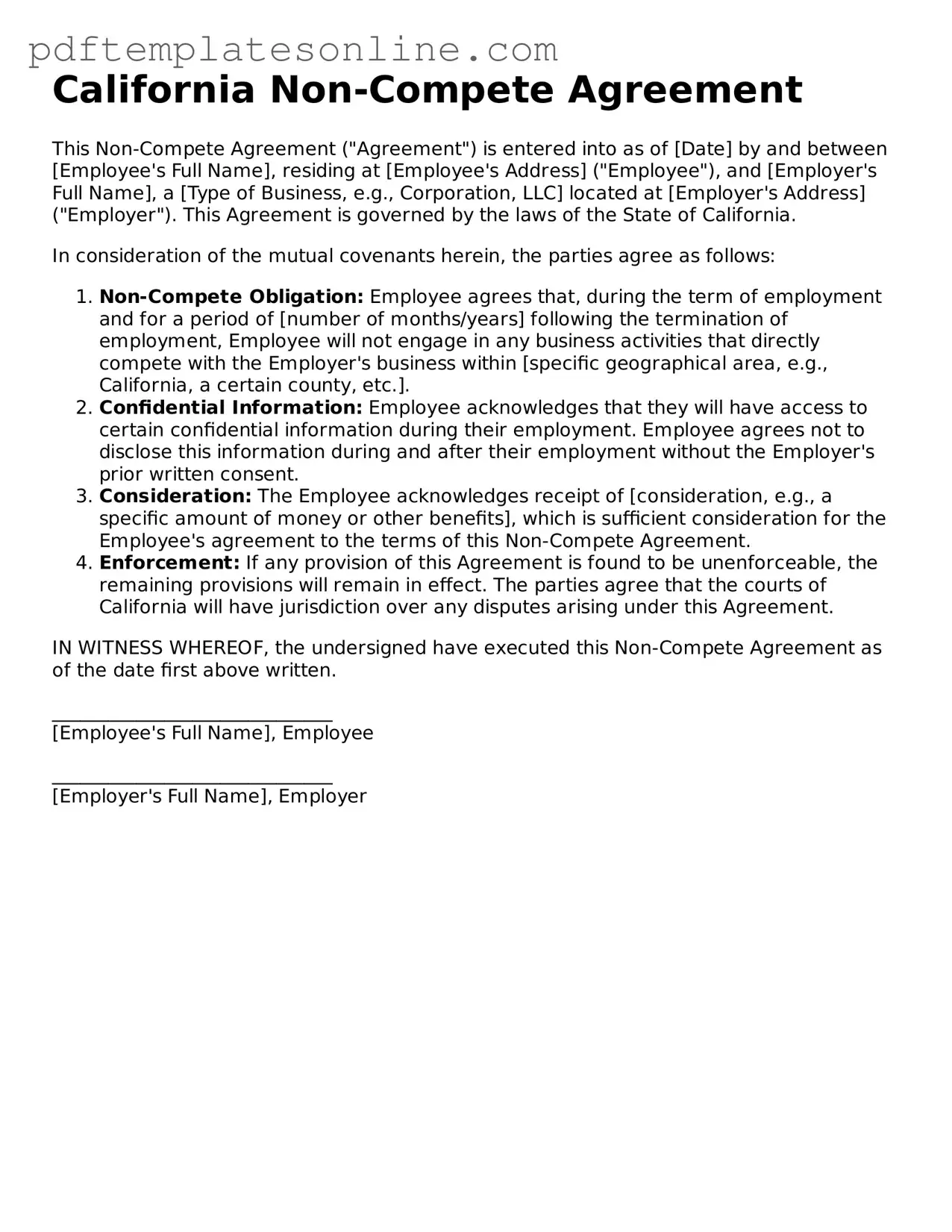Official California Non-compete Agreement Document
A California Non-compete Agreement is a legal document that restricts an employee's ability to work for competitors or start a competing business after leaving their current employer. These agreements aim to protect a company's trade secrets and proprietary information. However, California law generally limits the enforceability of such agreements, making them less common in the state.
Access Non-compete Agreement Editor Now
